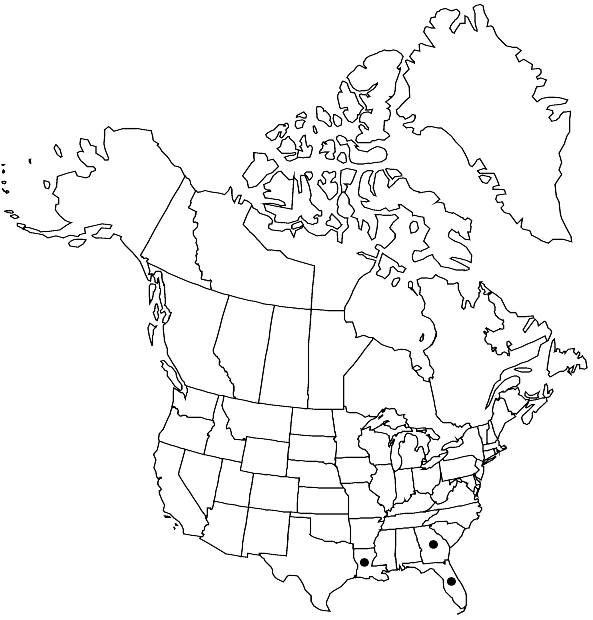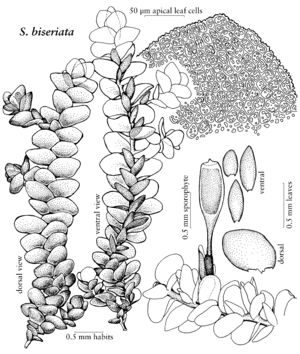Solmsiella biseriata
Bryologist 37: 100. 1935,.
Plants irregularly branched, usually in loose mats. Dorsal leaves ± asymmetric, oblong-ovate to elliptic, rounded, 0.45–0.65 mm. Ventral leaves smaller, ± symmetric, ± ligulate, rounded, 0.25–0.45 mm; laminal cells thin to firm-walled, thickened and brown with age, 10–16 × 8–13 µm, oblate-hexagonal in numerous basal, marginal rows. Perichaetial leaves ovate, obtuse to rounded. Seta 0.6–0.8 mm. Capsule 0.55–0.85 mm, pale-yellow; annuli a single row of quadrate cells; peristome absent; opercula conic, obliquly apiculate to rostellate. Calyptra 0.5 mm. Spores finely papillose, 21–31 µm.
Habitat: Dry areas, bark of trees and rocks
Elevation: low to moderate elevations
Distribution

Fla., Ga., La., Mexico (San Luis Potosí), Mexico (Tamaulipas), West Indies (Cuba), West Indies (Dominican Republic), Central America (Guatemala), South America (Brazil), South America (Paraguay), South America (Venezuela), Asia, Africa, Australia
Discussion
Solmsiella biseriata is known from Jefferson County in Florida, Richmond County in Georgia and Iberia Parish in Louisiana.
A. Touw (1992) noted that Malesian collections came from man-made habitats; similar habitats in the Americas should be carefully examined. Solmsiella biseriata, to the casual observer or the uninitiated, can be mistaken for a small leafy liverwort, as reflected in the genus of the basionym. However, its dimorphic leaves, arranged in 4 rows, and cucullate calyptra will distinguish it from Erpodium domingense, which has more or less monomorphic leaves arranged in several rows and mitrate calyptra.
Selected References
None.
Lower Taxa
"um" is not declared as a valid unit of measurement for this property.
